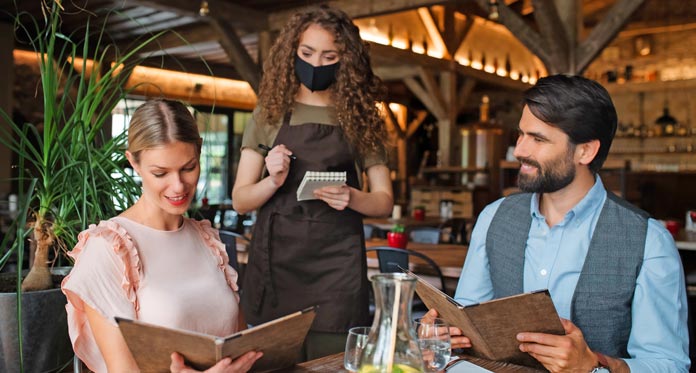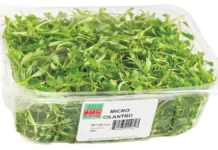
Article contributed by John Kelly, Zenreach
Looking only at the data for the first two months of 2020, you might have been tempted to declare—and not without good reason—that it was shaping up to be a banner year for restaurants, bars, and cafes. In the last week of February, national dining establishment foot traffic was up 3.6% compared to the previous year. The retail sector—the vertical generally used as the barometer of overall national economic health—was up 3.5% as well. The U.S. had experienced 23 consecutive quarters of GDP growth, one of the longest such periods in modern history. It felt to many like there was nothing that could cool down America’s red-hot economy.
And then, beginning in early March, the bottom fell out. As the novel coronavirus outbreak proliferated across the country and around the world (and as state and local governments wrestled with how to control it), foot traffic dropped precipitously across the board. By the end of the month, nationwide dining walk-ins were at a paltry 26.2% of the previous year’s figures. The retail sector hardly fared better, with foot traffic hitting 27.1% of what would be considered normal. Furthermore, both restaurants and retail hit foot traffic low points in mid-April, with walk-ins at a mere 23.8% and 25.2%, respectively.
One particularly interesting insight we’ve gleaned from our data is that this steep decline in both restaurant and retail foot traffic began well before most states had issued shelter-in-place orders. For context, only eight states had implemented quarantine orders by March 23, and yet nationwide restaurant walk-ins had already dropped by an eye-popping 61.2% from the level they were just two weeks prior. The retail sector was similarly devastated, dropping by 59.7% in that same span.
We can attribute this early decline, at least in part, to the fact that some of the earliest states to issue shelter-in-place orders were also among the most populous: California (#1 in terms of population), New York (#4), Illinois (#6), and Ohio (#7) were all among the first eight states to close down. However, that explanation does not tell the full story. Consumer concerns about sanitation and safety almost certainly played a role as well. And without question, there’s a lot to be concerned about: with over 120,000 COVID-19 deaths now confirmed and no slow down in sight, consumer concerns about the possibility of catching or spreading the coronavirus by way of social contact are as high as they’ve ever been.
So where are we today? And how soon can we expect a return to normal levels of foot traffic at dining establishments?
Since hitting its low point in mid-April, both restaurant and retail foot traffic have experienced a slow but steady climb to around 50% nationwide. This is ostensibly good news; nine weeks of steady recovery would seem to bode well for a reasonably quick return to normal. The nationwide data alone, however, doesn’t show the full picture. While the initial rates of restaurant foot traffic decline were similar across states, the rates of rebound, by contrast, have varied widely by state and locality.
Different states—and independently, a large number of municipalities and counties within the states—imposed and lifted their respective quarantine orders at different points in time. This means that some states and localities experienced longer shelter-in-place periods than others—in some cases, by a margin of several weeks.
States that closed late and opened early—like Arizona, Florida, Georgia and Texas; let’s refer to them as the Optimistic States—experienced a less significant impact on the restaurant sector. Like the nation at large, these states saw their lowest dining foot traffic numbers in mid-April. By June 15, walk-ins in all of these states had rebounded to above 50% of normal. On average, these four Optimistic States spent just 32 days in lockdown and experienced 84 days of sub-50% restaurant foot traffic. For comparison, the national average for sub-50% foot traffic days is at 96 days. Georgia, which had the shortest lockdown timeline in the country, spent just 22 days in quarantine and has had only 75 days of sub-50% foot traffic.
Contrast those numbers with states that acted quickly to enact shelter-in-place orders and which have shown more caution in reopening—like California, Hawaii, New Jersey, and New York; let’s call these the Cautious States. These states have seen a much smaller bump in in-restaurant activity. We’ve seen modest-at-best increases in foot traffic as they slowly reopen, and each of these states are still under 45% of what would be considered normal for this time of year. On average, these Cautious States spent 58.5 days in lockdown and have experienced 96.5 days (and counting) of sub-50% retail traffic.
If current trends hold, our data forecasting models predict a national return to 2019 levels of restaurant foot traffic on September 13.
It’s important to note, however, that this model is essentially a linear extrapolation of current trends and assumes no further shelter-in-place restrictions. That assumption, of course, is far from guaranteed. In fact, states are already seeing the number of COVID-19 cases spike massively as they’ve opened back up over the past several weeks. 12 states, including each of the four Optimistic States we analyzed above, have hit record highs in new coronavirus cases since June 19.
And it’s not only the Optimistic States that are being affected: California, the longest-quarantining state in the country aside from New Jersey, has seen a record number of cases recently. In fact, California has been declared a hotspot for infections of younger people between the ages of 20 and 30.
We also have not seen the post-Memorial Day bump in foot traffic in 2020 that we have observed in prior years. Ordinarily, there is a pronounced rise in foot traffic across sectors as we enter the summer season and people spend more time out and about. It’s almost a certainty that spiking cases of COVID-19 and ongoing restrictions have put a damper on summer walk-ins. While the overall traffic numbers continue to grow, the rate of growth of restaurant foot traffic, even in our four Optimistic States, has slowed.
While policymakers and public health officials race to develop the best plan to balance the desire to contain the virus with the need to reopen the economy, it seems as though we can draw a couple of conclusions: 1) there is a strong correlation between shelter-in-place order duration and negative impact on dining establishment foot traffic, and 2) even with the lifting of these orders, consumers are not flocking back to restaurants quickly.
On June 24, the United States saw its greatest single-day increase in COVID-19 cases since the pandemic began. It’s likely that rising infection rates will force several states to re-implement quarantine orders, which—based on previous analysis—would throw cold water on any sustained foot traffic recovery. All in all, the return to normalized foot traffic in the United States will take many months.
John Kelly is the CEO of Zenreach, the walk-through company, which is helping merchants connect the online and offline world through in-store WiFi and digital marketing.























